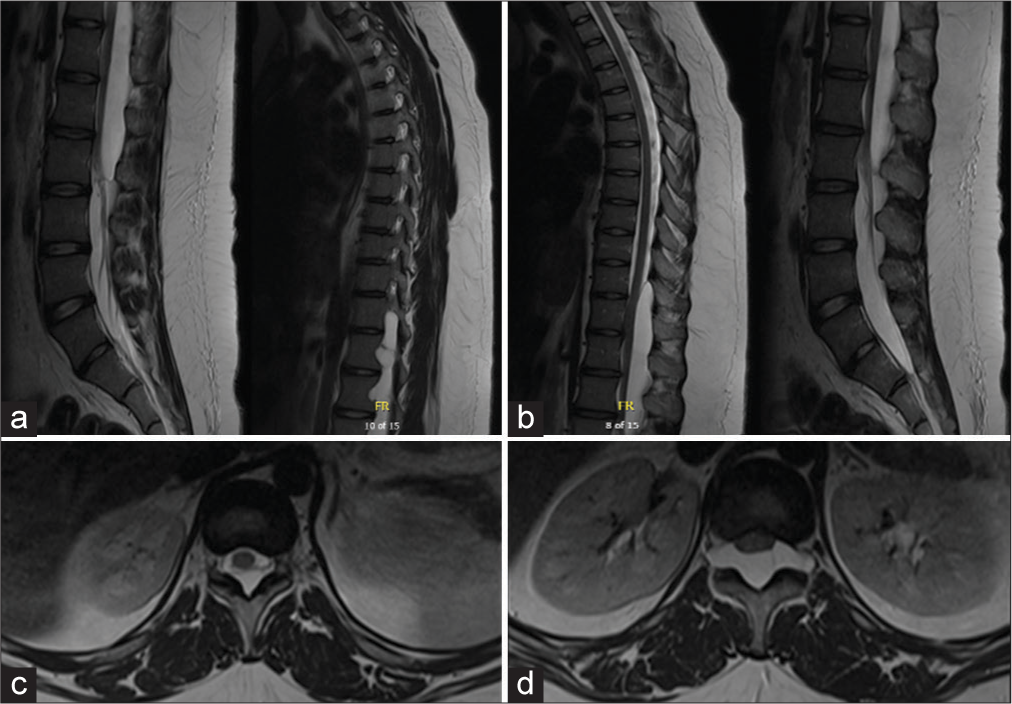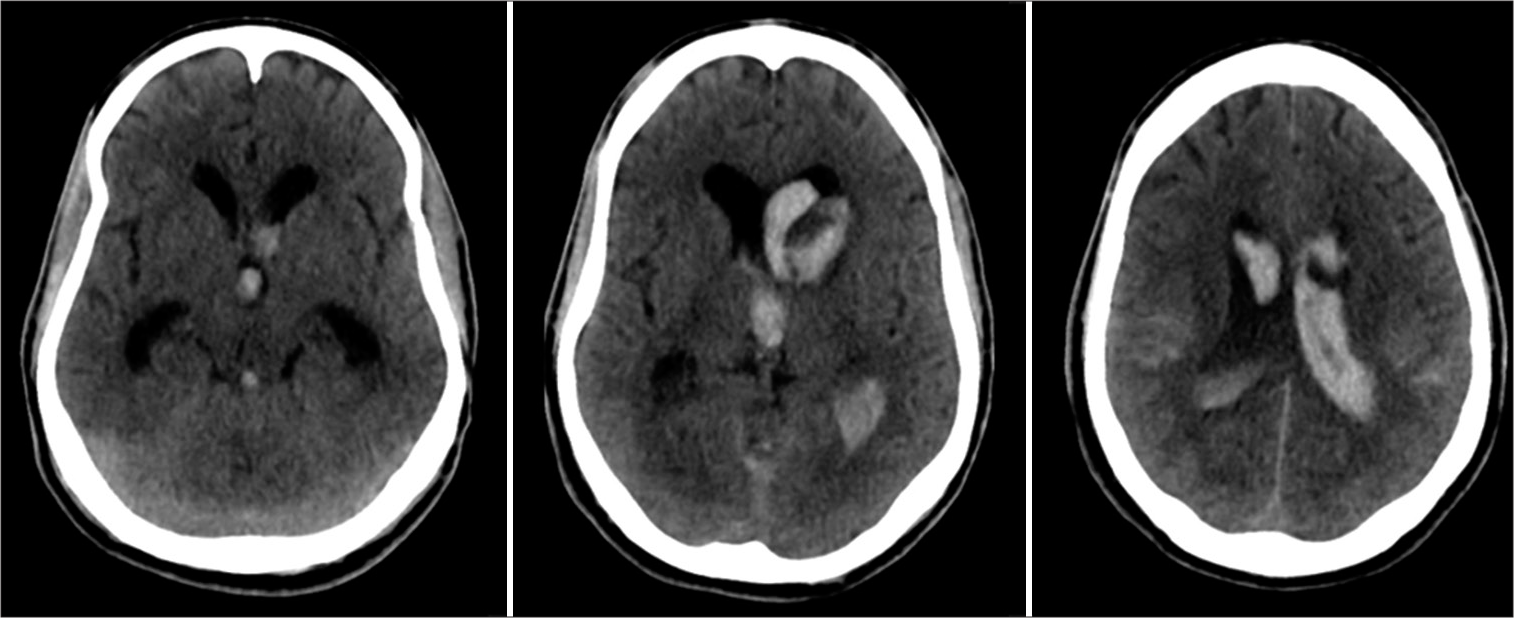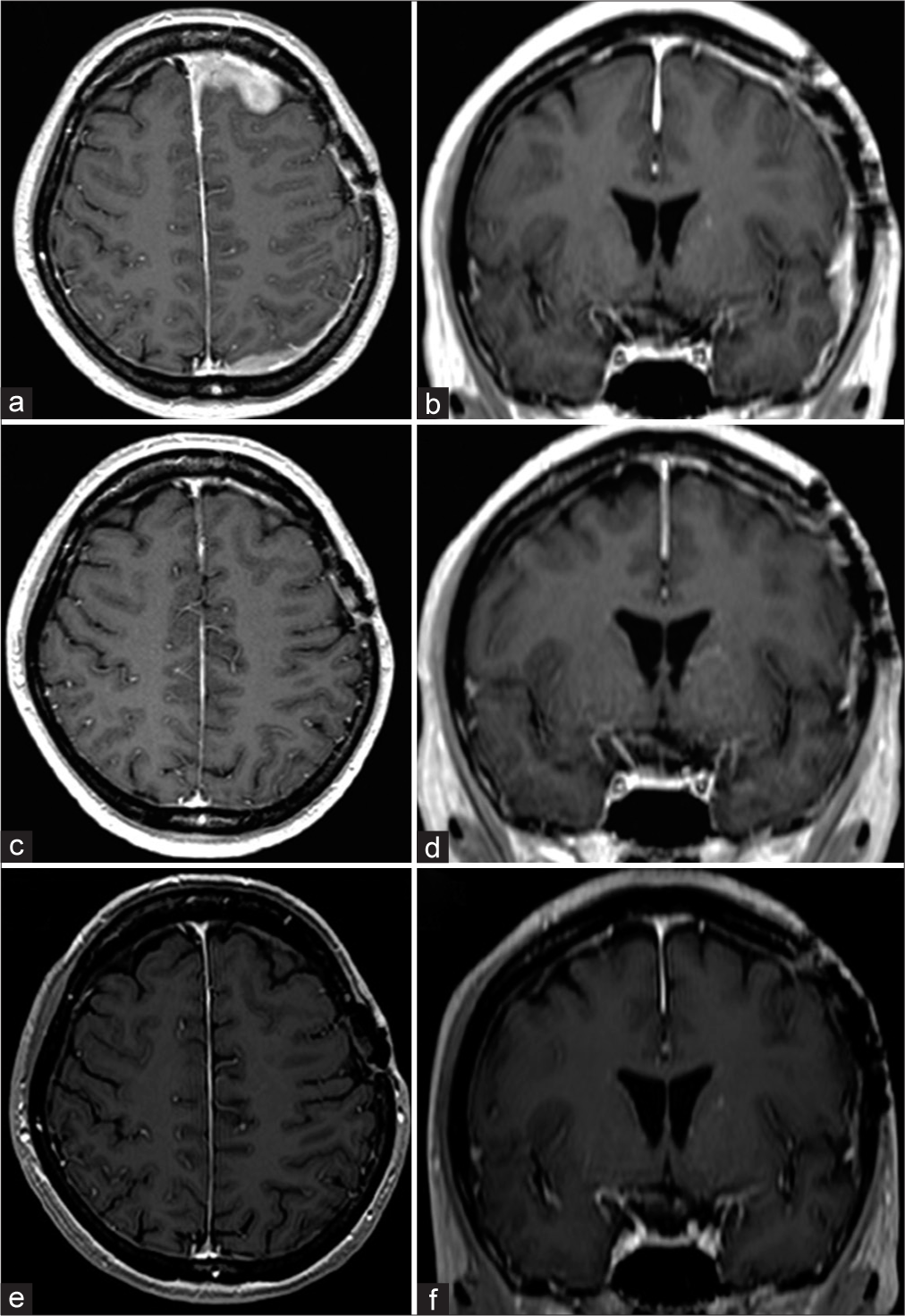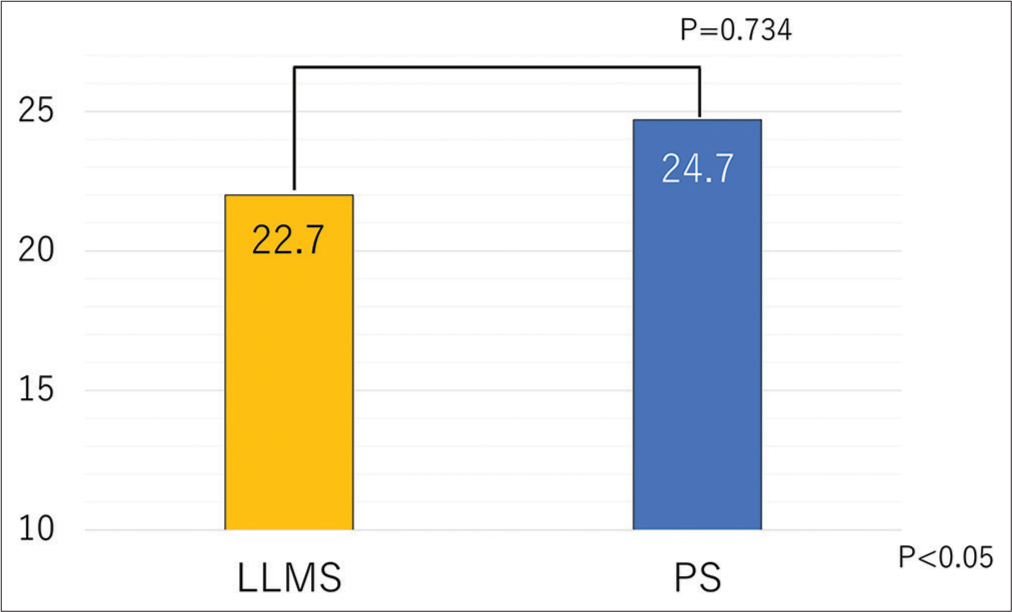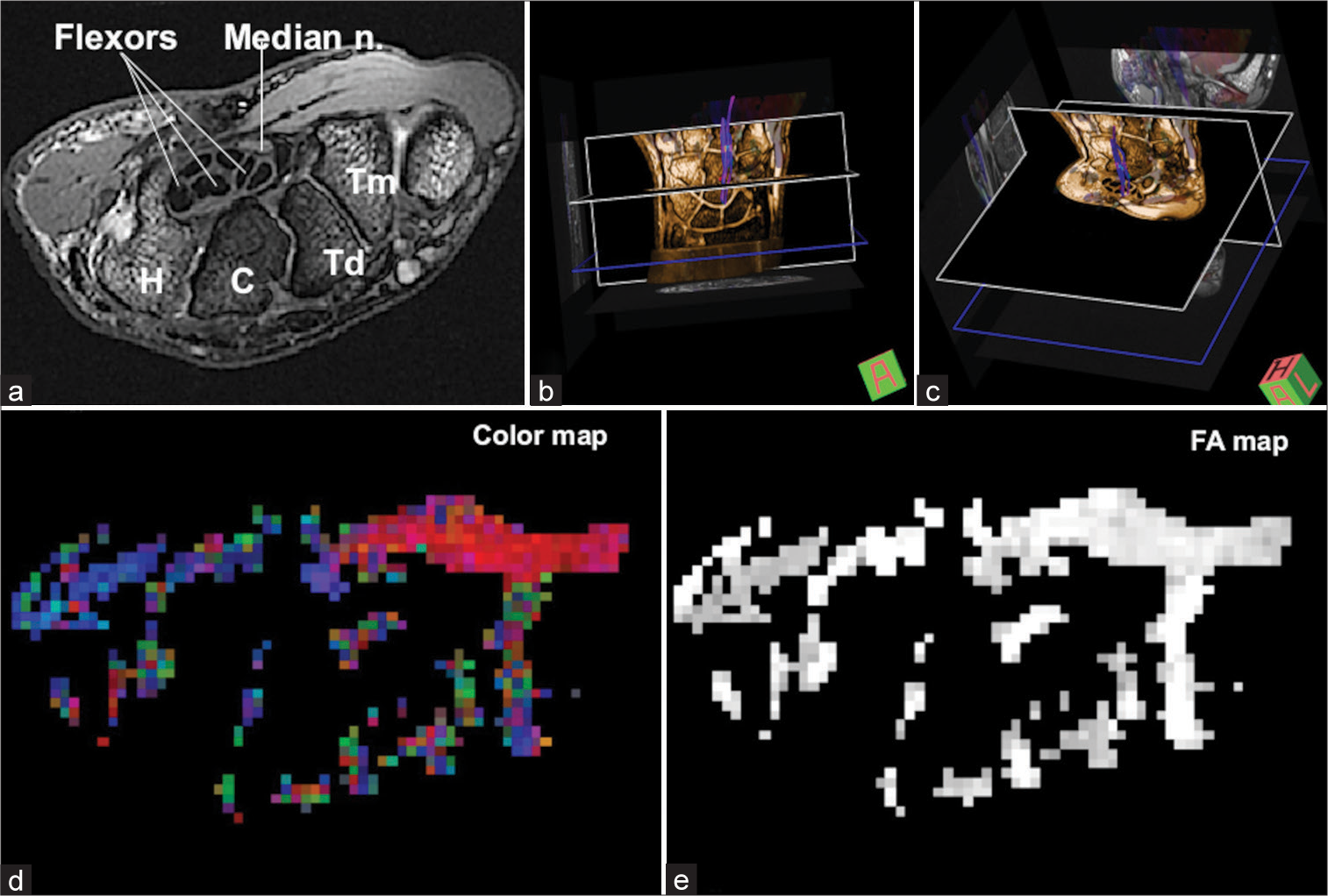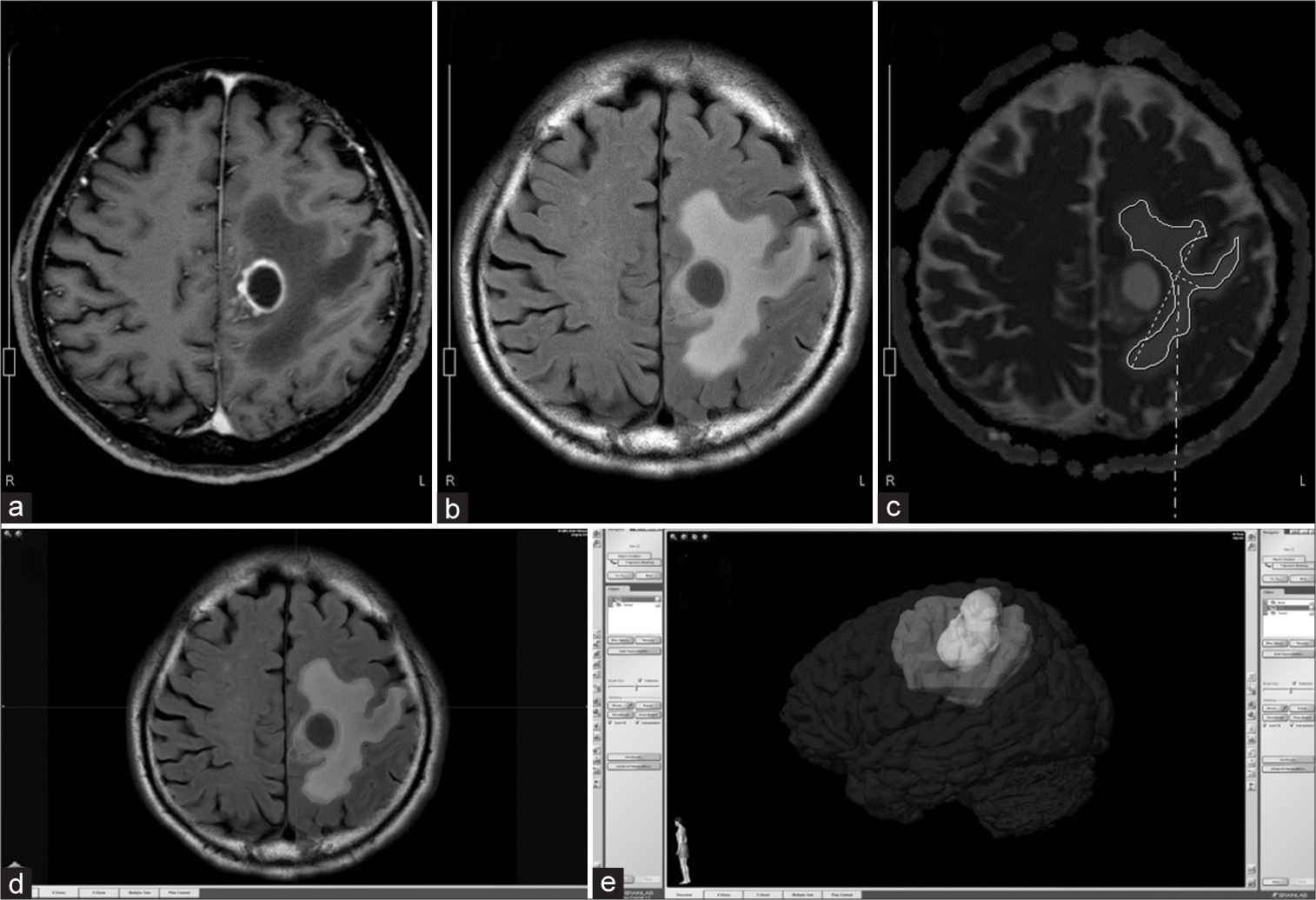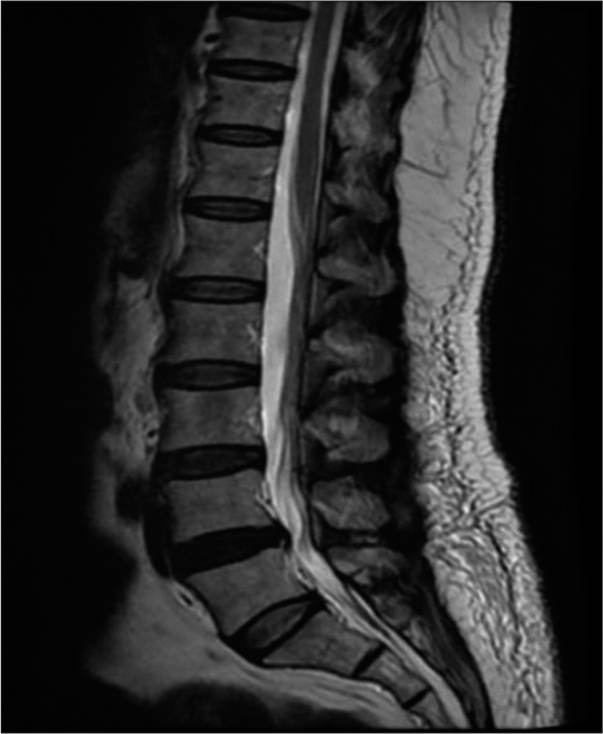Surgical treatment of orbital tumors in a single center: Analysis and results
Date of publication: 05-Apr-2024
Background: Orbital tumors, arising within the bony orbit and its contents, present diverse challenges due to their varied origins and complex anatomical context. These tumors, classified as primary, secondary, or metastatic, are further subdivided into intraconal and extraconal based on their relationship with the muscle cone. This classification significantly influences surgical approach and management. This study highlights surgical experiences with orbital tumors, underscoring the importance of tailored surgical approaches based on the lesion’s site and its proximity to the optic nerve.
Extradural spinal cyst in a pediatric patient: A case report
Date of publication: 05-Apr-2024
Background: Spinal extradural arachnoid cysts comprise <1% of all spinal lesions and are rare findings in pediatric patients. The pathogenesis of spinal extradural arachnoid cysts is not well known but is thought to most commonly be due to congenital dural defects. Other origins include trauma, inflammation, or infection, such as arachnoiditis. Spinal magnetic resonance imaging is the gold standard for diagnosis, showing a fluid-filled space dorsal to the spinal cord with signal intensity akin to cerebrospinal fluid (CSF) and often the site of dural defect with CSF leak. While most spinal extradural arachnoid cysts are asymptomatic, large cysts can compress the spinal cord or nerve roots, leading to myelopathy, radiculopathy, or focal pain symptoms. In such cases, surgical management is indicated.
Adequate control of seizures in a case of lead migration and neuromodulation of the posterior Sylvian junction: A case report
Date of publication: 05-Apr-2024
Background: This report aims to describe the neuromodulation effect on seizure control in a patient with a left hippocampal migrated electrode to the Posterior Sylvian Junction (PSJ) during a follow-up of 17 years.
The long-term effect on functional outcome of endoscopic brainwashing for intraventricular hemorrhage compared to external ventricular drainage alone: A retrospective single-center cohort study
Date of publication: 29-Mar-2024
Background: Intraventricular hemorrhage (IVH) is a complex condition with both mechanical and chemical effects, resulting in mortality rates of 50–80%. Recent reports advocate for neuroendoscopic treatment, particularly endoscopic brainwashing (EBW), but long-term functional outcomes remain insufficiently explored. This study aims to outline the step-by-step procedure of EBW as applied in our institution, providing results and comparing them with those of external ventricular drainage (EVD) alone.
Primary extranodal marginal zone mucosa-associated lymphoid tissue-type B-cell lymphoma involving the dura: A case report
Date of publication: 29-Mar-2024
Background: Primary extranodal marginal zone mucosa-associated lymphoid tissue-type B-cell lymphoma (EMZMBCL), which presents as a dural mass, is a rare intracranial tumor that mimics a subdural hematoma or meningioma.
Investigation of long lateral mass screw insertion torque
Date of publication: 29-Mar-2024
Background: Here, we assessed a new trajectory and insertion torque for the placement of a long lateral mass screw (LLMS) that offers stronger posterior fixation versus a shorter lateral mass screw (LMS) in the posterior cervical spine. We report a short technical note of the insertion torque of LLMS.
Diffusion tensor imaging combined with the dual-echo steady-state (DESS) protocol for the evaluation of the median nerve in the carpal tunnel: A preliminary study
Date of publication: 29-Mar-2024
Background: Carpal tunnel syndrome (CTS) is diagnosed based on neurological, electrophysiology, and radiological findings. Due to the technical development of magnetic resonance imaging (MRI), the median nerve is evaluated with several MRI protocols. However, diffusion tensor imaging (DTI) combined with a dual-echo steady-state (DESS) protocol is not frequently used to evaluate the median nerve of CTS. This study aimed to evaluate the median nerve in the carpal tunnel using DTI combined with a DESS protocol.
Association of ADC of hyperintense lesions on FLAIR images with TERT promoter mutation status in glioblastoma IDH wild type
Date of publication: 29-Mar-2024
Background: Although mutations in telomerase reverse transcriptase (TERT) promoter (TERTp) are the most common alterations in glioblastoma (GBM), predicting TERTp mutation status by preoperative imaging is difficult. We determined whether tumour-surrounding hyperintense lesions on fluid-attenuated inversion recovery (FLAIR) were superior to those of contrast-enhanced lesions (CELs) in assessing TERTp mutation status using magnetic resonance imaging (MRI).
Aortoiliac occlusion mimicking cauda equina syndrome, a diagnostic dilemma: A case report and review of the literature
Date of publication: 29-Mar-2024
Background: Cauda equina syndrome (CES) is a consequence of a variety of etiologies. CES is most commonly due to compression of the thecal sac and nerve roots by a massive disc herniation. However, it rarely presents secondary to aortic occlusion. Aortoiliac occlusive disorder is usually associated with chronic claudication, erectile dysfunction, and diminished lower limb pulses. Acute aortic occlusion, however, is associated with serious complications such as spinal cord infarction and ischemia. It is also associated with a high risk of morbidity and mortality. Moreover, it poses a diagnostic challenge and may be overlooked. This report emphasizes the importance of considering vascular etiology as a differential diagnosis for CES.



